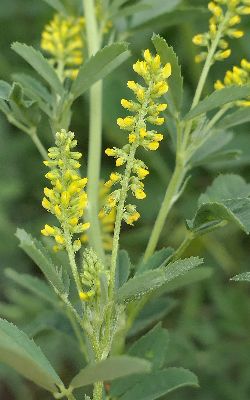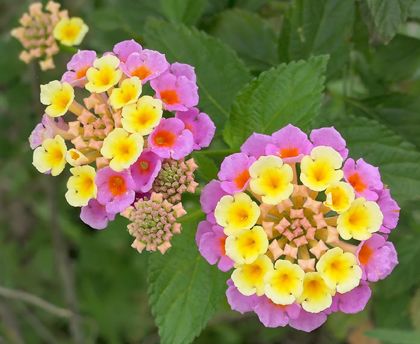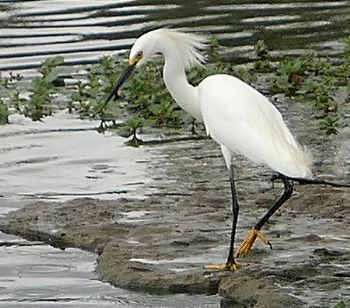
view of the pond from the shoreline

Iris pseudacorus (yellow flag iris)

Melilotus albus (white sweet clover)

Melilotus indicus (sour clover)
| This park, which opened in 2008, was seeded, in collaboration with the Lady Bird Johnson Wildflower Center, to be a restoration of native Texas blackland prairie. A dozen years later, though, there are numerous exotics mixed in and, at least in late winter (the Vernal Equinox was still two days away when we visited), non-native blossoms were what caught my eye the most in the weedy areas. There are also extensive, diverse and well-maintained native plant beds in the park. |

Lantana sp. (lantana)

Buglossoides arvensis (corn gromwell)

Hedypnois rhagadioloides (Crete weed)

Mordellina pustulata (tumbling flower beetle)

Calligrapha bidenticola (leaf beetle)

Oncometopia clarior (leafhopper)
| The white stuff on the wing of this female (there is a matching blob on the other wing as well) is a mass of chalky brochosomes that she sequestered in anticipation of ovipositing (egg laying). Brochosomes are usually secreted by leafhoppers for use as waterproofing on their bodies, but some species' females produce a slightly different form of this substance which is then scraped off by her hind legs to cover the deposited eggs, possibly to guard against parasitoids. |

Netelia sp. (ichneumon)
| This genus of ichneumons is extremely similar to two others: Ophion and Enicospilus. Wing venation is the best clue to separating them. |

Unknown sp. (midge & green lacewing egg)

Egretta thula (snowy egret)

![]()











